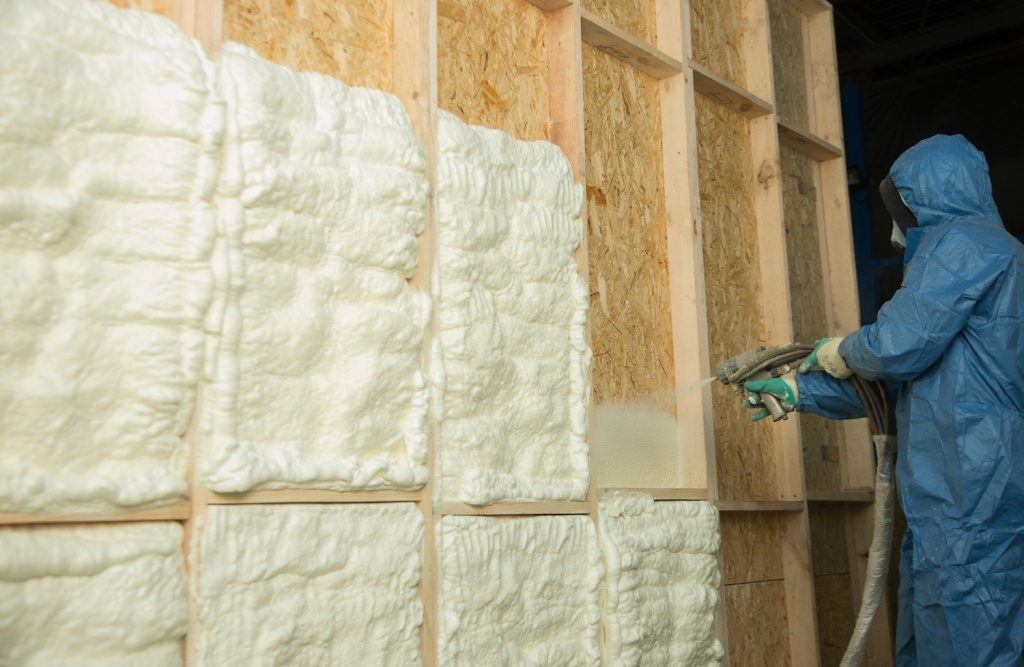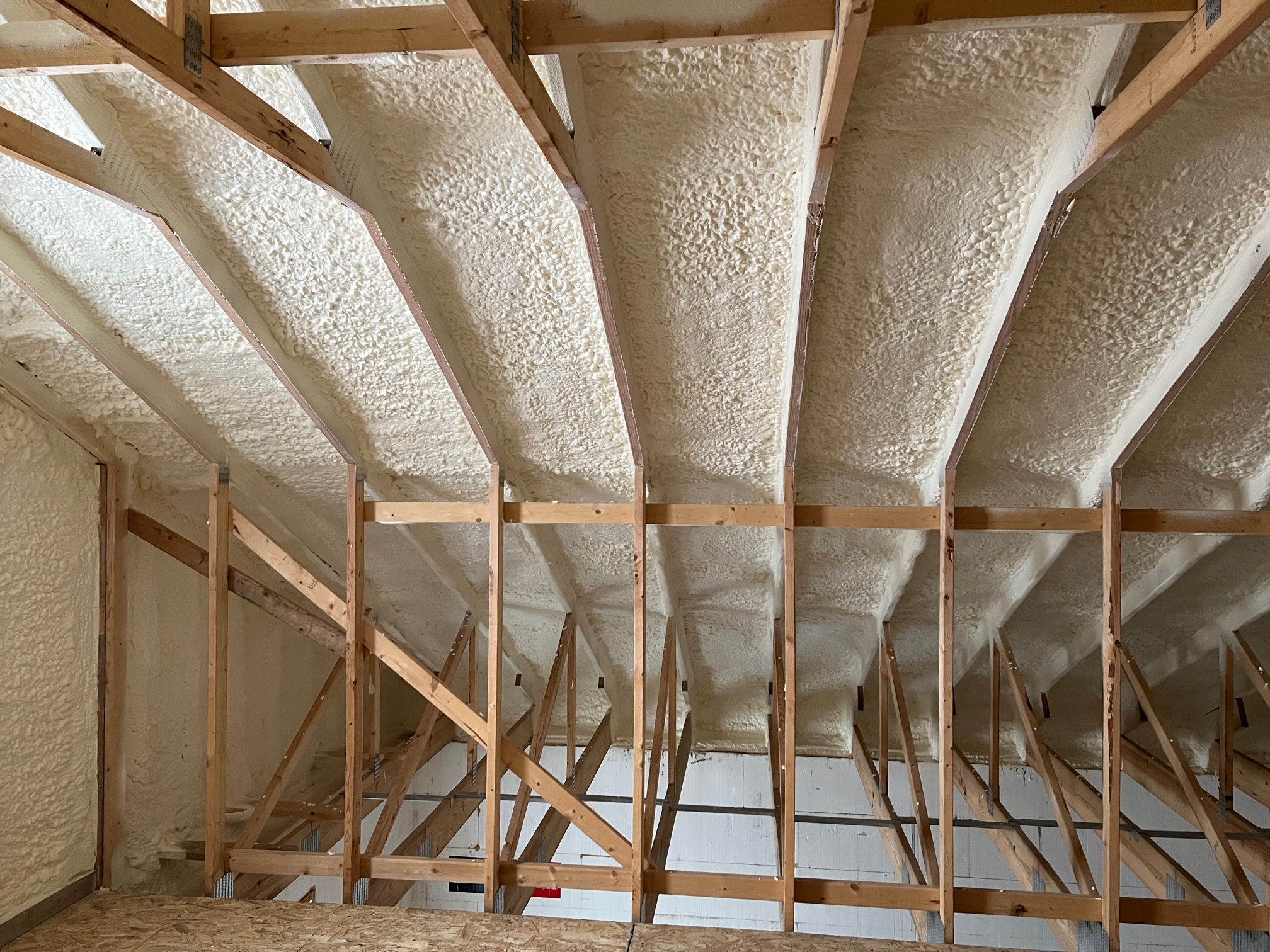How Spray Foam Can Boost Power Performance in Your Home
How Spray Foam Can Boost Power Performance in Your Home
Blog Article
Spray Foam: The Ultimate Remedy for Air Sealing and Insulation
Spray foam insulation has become a leading solution for effective air securing and thermal insulation, using an unique combination of homes that establish it aside from typical approaches. Its capacity to expand and fill spaces makes it especially efficient in protecting against air leakage, which can significantly affect power efficiency. Nevertheless, comprehending the complete scope of its benefits, installment procedures, and contrasts with various other insulation types is critical for making notified decisions. As we discover these aspects, the ramifications for both brand-new buildings and retrofits come to be significantly significant. What elements should affect your choice?
What Is Spray Foam?
Spray foam is a flexible insulation material that integrates the principles of air securing and thermal resistance to boost power effectiveness in structures. Made up mostly of polyurethane or other similar substances, spray foam is applied as a fluid that expands upon contact with surfaces, developing a strong, constant layer of insulation. This special residential property allows it to fill up voids, cracks, and gaps that typical insulation products may overlook, giving a premium air seal.
There are two primary sorts of spray foam: open-cell and closed-cell. Open-cell spray foam is lighter and a lot more adaptable, offering excellent noise absorption and a lower R-value per inch - Spray Foam. In contrast, closed-cell spray foam is denser, providing a greater R-value, wetness resistance, and added structural honesty to developing components
The application process usually includes customized devices, making sure a seamless application that adheres to various substratums, consisting of concrete, metal, and wood. This adaptability makes spray foam appropriate for both new buildings and retrofitting existing structures. Its capacity to produce a closed barrier considerably adds to decreasing energy consumption and improving indoor air high quality, therefore making it a recommended selection among house owners and builders alike.
Benefits of Spray Foam Insulation
Among one of the most considerable benefits of spray foam insulation is its exceptional ability to produce a constant air barrier, which efficiently decreases power loss. Unlike conventional insulation materials, spray foam broadens to fill fractures and voids, ensuring that air leakage is significantly reduced. This particular not just boosts power performance yet additionally causes decrease utility expenses in time.
Additionally, spray foam insulation supplies remarkable thermal resistance, adding to a much more steady interior atmosphere. Its high R-value per inch permits reliable insulation in constrained areas, making it suitable for attic rooms, walls, and crawl areas. Additionally, the moisture-resistant buildings of spray foam aid prevent mold and mildew and mold growth, promoting much healthier living conditions.
An additional vital benefit of spray foam insulation is its sound-dampening high qualities (Spray Foam). It effectively minimizes noise transmission in between spaces, producing a quieter and a lot more comfy home atmosphere. The toughness of spray foam also stands out, as it does not droop or work out over time, keeping its efficiency throughout its life-span
Just How Spray Foam Functions
Recognizing just how spray foam insulation functions is essential for valuing its effectiveness in air securing and thermal resistance. Spray foam insulation contains two primary parts: isocyanate and polyol material. When these elements are blended, they undergo a chain reaction that causes the product to increase swiftly, developing a dense foam that fills splits, tooth cavities, and gaps.
As the foam broadens, it adheres to surface areas, developing an airtight seal that dramatically minimizes air infiltration. This particular makes spray foam insulation extremely efficient at avoiding drafts and dampness penetration, which can cause energy loss and damages with time. Furthermore, the closed-cell version of spray foam provides premium thermal resistance as a result of its rigid structure, effectively minimizing warmth transfer.
The distinct residential properties of spray foam allow it to adapt uneven surface areas, guaranteeing extensive coverage and a seamless obstacle. Therefore, spray foam insulation not just enhances energy efficiency but also contributes to enhanced interior air quality by lowering the build-up of irritants and contaminants. Inevitably, understanding the technicians behind spray foam highlights its role as a superior choice for insulation and air securing in both commercial and residential applications.
Installation Process Introduction

Before setup, the area should be sufficiently cleaned up and prepped, making certain that surface areas are without dust, dampness, and particles. Because pollutants can compromise bond and overall performance, this action is important. As soon as the location is prepared, the application official statement includes mixing both parts of the More hints spray foam, which broadens upon contact and fills spaces properly.
Educated experts need to carry out the setup, utilizing specific devices to make sure consistent protection and optimal density. Safety and security preventative measures, consisting of wearing safety gear and ensuring appropriate ventilation, are vital during this procedure. After application, the foam typically cures swiftly, creating a solid barrier that enhances energy effectiveness.
Contrasting Spray Foam to Standard Insulation
When examining insulation choices, spray foam insulation stands out in contrast to traditional materials such as fiberglass and cellulose. Unlike fiberglass and cellulose, which can enable air infiltration, spray foam expands upon application, filling holes and gaps to create an airtight seal.
Additionally, spray foam offers a higher R-value per inch than typical insulation kinds, supplying more efficient thermal resistance in a thinner profile. This particular is specifically valuable in spaces with minimal tooth cavity deepness. Spray foam is immune to dampness and mold growth, which can be a significant concern with cellulose and fiberglass, specifically in moist environments.
However, spray foam insulation generally brings a higher ahead of time cost than its standard equivalents. Homeowners need to consider this first investment against long-lasting energy financial savings and performance advantages. Eventually, while both insulation kinds offer their function, spray foam emerges as an advanced remedy for contemporary insulation needs, specifically in terms of air securing and thermal check that effectiveness.

Verdict
In recap, spray foam insulation represents a highly efficient remedy for accomplishing optimal air sealing and thermal resistance. Its special homes, including dampness resistance and audio dampening, make it appropriate for numerous applications in both brand-new building and constructions and retrofitting projects (Spray Foam). Although the first expenses might be higher compared to typical insulation products, the long-term advantages, such as substantial power savings and boosted interior air quality, warrant the financial investment and underscore its worth in modern structure methods.
Spray foam insulation has arised as a leading remedy for effective air sealing and thermal insulation, offering a distinct combination of residential or commercial properties that set it apart from traditional techniques.Spray foam is a functional insulation product that incorporates the principles of air sealing and thermal resistance to enhance power effectiveness in buildings.When assessing insulation alternatives, spray foam insulation stands out in contrast to typical materials such as fiberglass and cellulose. Inevitably, while both insulation types offer their function, spray foam arises as a much more advanced remedy for contemporary insulation requirements, especially in terms of air sealing and thermal efficiency.
In recap, spray foam insulation represents a very effective option for accomplishing ideal air sealing and thermal resistance.
Report this page